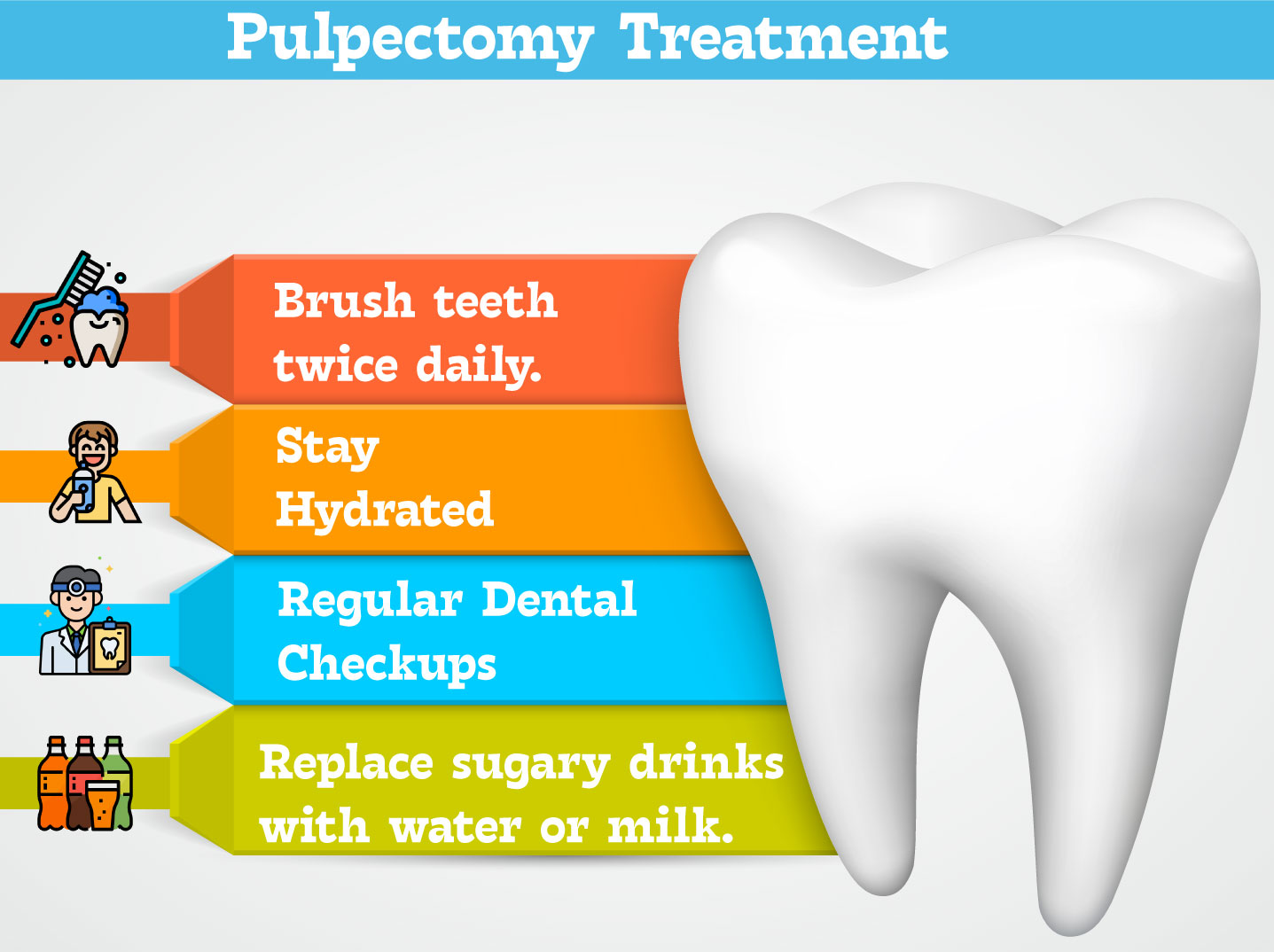
Pulpectomy Treatment in Kids: When and Why It’s Needed
When it comes to your child’s oral health, understanding procedures like pulpectomy treatment becomes crucial. In this blog, we will delve into what a pulpectomy entails, why it’s necessary, and its role in maintaining your child’s dental well-being.
Understanding Pulpectomy
What is a Pulpectomy?
A pulpectomy is a dental procedure designed to remove all the pulp from the crown and roots of a tooth. The pulp, comprising connective tissue, blood vessels, and nerves, resides in the tooth’s innermost layer.
When is Pulpectomy Needed?
Primarily performed in children, a pulpectomy treatment serves to save severely infected baby (primary) teeth, often referred to as a “baby root canal.” In permanent teeth, a pulpectomy is the initial step in a complete root canal procedure.
Pulpectomy vs. Root Canal: Unravelling the Differences
A pulpectomy involves complete pulp removal from both crown and roots, typically performed on baby teeth. On the other hand, a root canal, while starting with a pulpectomy, concludes with a permanent filling or crown, usually performed on permanent teeth.
The Procedure: From Start to Finish
One-Visit Wonder
Pulpectomy treatment is generally a one-visit procedure, involving the following steps:
- Diagnostic X-Rays: Assessing infection signs and root canal anatomy.
- Local Anesthetic: Numbing the area to ensure a pain-free experience.
- Tooth Drilling: Creating an access hole into the tooth.
- Pulp Removal: Extracting all pulp using dental instruments.
- Cleaning and Disinfection: Ensuring a sterile environment.
- Filling with Resorbable Material: Replacing pulp with material reabsorbed by the body.
Root Canal Journey
In contrast, a root canal requires multiple visits, encompassing cleaning, shaping, and filling of the entire root canal system. Temporary crowns precede permanent filling and crown installation.
When is a Pulpectomy treatment Needed?
Preserving Baby Teeth
Pulpectomy comes into play when decay or trauma severely damages a baby tooth. Despite their temporary nature, preserving baby teeth is crucial to prevent issues like difficulty chewing, speech development problems, and misalignment of permanent teeth.
Partial Pulpectomy: A Closer Look
A partial pulpectomy treatment, also known as pulpotomy or pulp therapy, involves removing only the damaged portion of pulp in the upper chamber of the tooth without touching the roots. This less invasive option is suitable when tooth damage is less severe.
Can a Pulpectomy Be Avoided?
Prevention is Key
 Good oral care practices can mitigate the need for pulpectomy treatment:
Good oral care practices can mitigate the need for pulpectomy treatment:
- Brush teeth twice daily.
- Stay hydrated during meals by sipping water to help rinse away sugars and acids.
- Replace sugary drinks with water or milk.
- Attend regular dental exams to catch decay early.
Protecting Against Trauma
Trauma can lead to tooth decay. Wearing a mouth guard during athletic activities and promptly visiting the dentist after mouth injuries can reduce the risk.
Pulpectomy vs. Extraction: Weighing the Options
While pulpectomy treatment aims to save a tooth, extraction may be necessary if the tooth is severely damaged, especially if roots are affected. In cases of a loose baby tooth, extraction might be preferable. Space maintainers may be used in such instances to prepare for the eruption of permanent teeth.
Recovery and Outlook: What to Expect
Post-pulpectomy, normal activities can resume immediately. However, avoiding eating until the anesthetic wears off is advisable. Antibiotics may be prescribed for severe infections, and over-the-counter pain relievers can manage swelling and sensitivity.
Regular brushing and flossing are crucial, and any prolonged or worsening symptoms warrant a call to the dentist.
Cost Considerations: Understanding Expenses in India
In India, the cost of a pulpectomy treatment can vary, typically ranging from ₹5,000 to ₹15,000 or more. The specific amount depends on various factors, including the tooth requiring treatment, the need for imaging tests, insurance coverage, and the professional’s expertise.
Root canals with permanent crowns tend to be on the higher side of the cost spectrum. It’s advisable to check with your dentist for a detailed estimate tailored to your specific case. Additionally, inquire about any potential discounts or payment plans that may be available to make the treatment more financially manageable.
Conclusion
In the realm of kids’ dental care, understanding the nitty-gritty of procedures like pulpectomy, pulpectomy in primary teeth, pulpotomy, or even tooth removal is crucial for parents. At Kid’s Dental Studio, we’re here to cut through the jargon and be your go-to for pediatric oral health. Whether it’s a quick pulpectomy or a more in-depth root canal, our focus is straightforward – preserving those little pearly whites. Through prevention, early action, and careful aftercare, we’re paving the way for smiles that last a lifetime. Trust Kid’s Dental Studio for practical expertise tailored to your child’s needs.
Leave a reply
Leave a reply